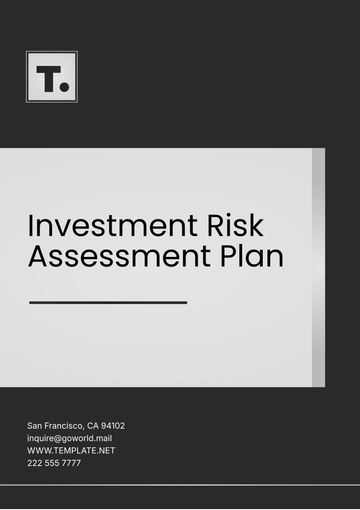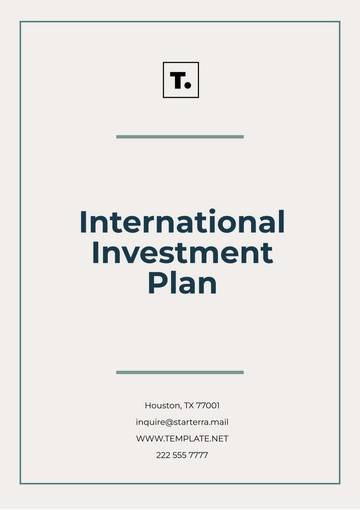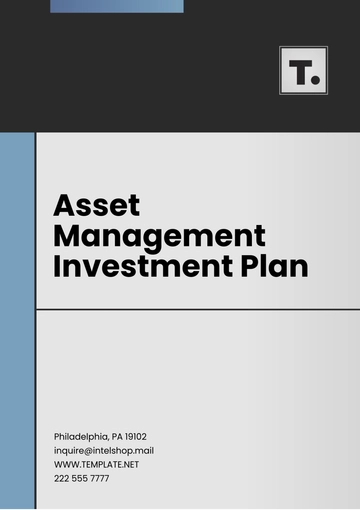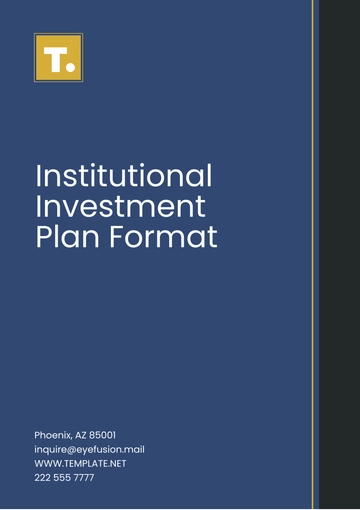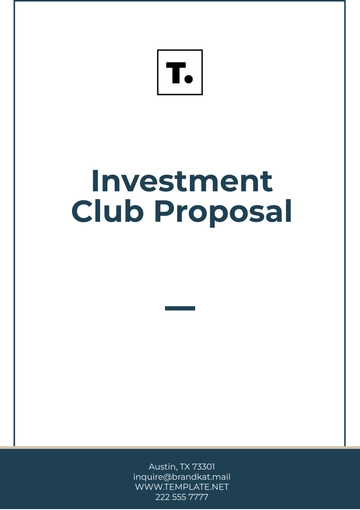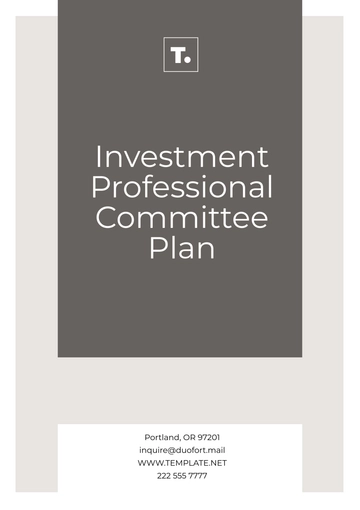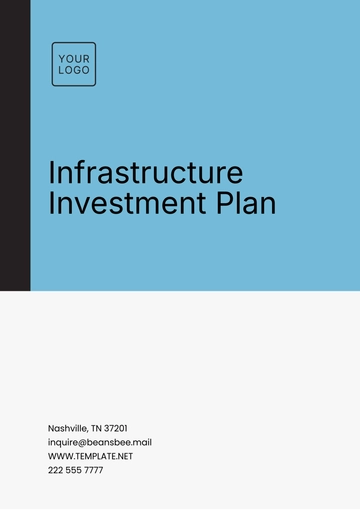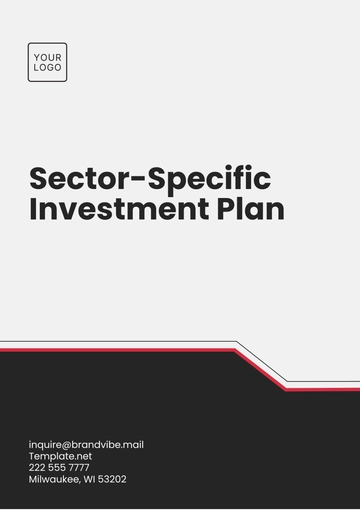Free Investment Professional Committee Plan
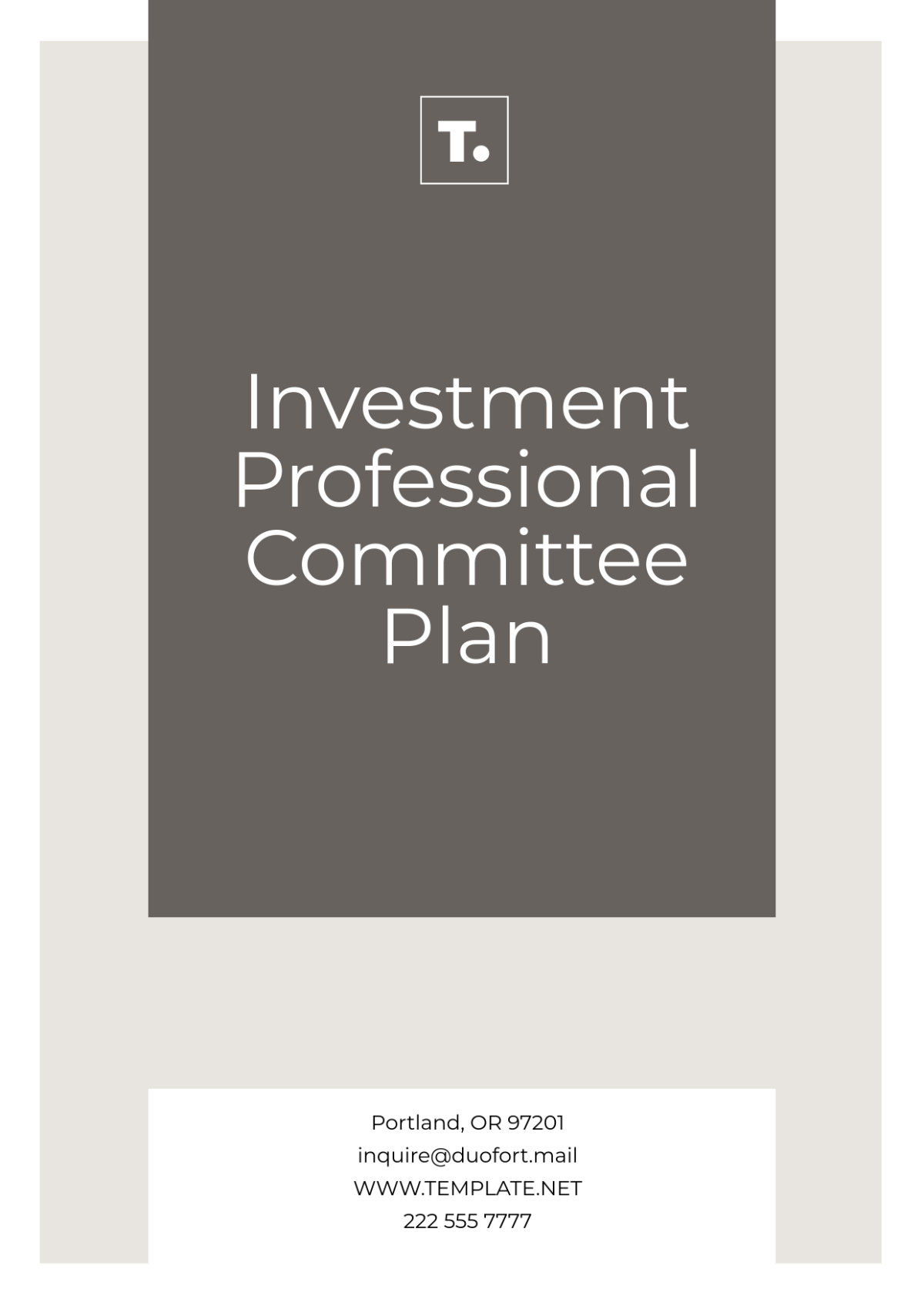
I. Introduction
This document outlines a comprehensive strategy for forming and maintaining an effective Investment Professional Committee (IPC). The primary purpose of this committee is to oversee investment strategies, manage risk, and ensure compliance with regulatory standards. By leveraging the expertise of its members, the IPC aims to enhance investment decision-making and optimize portfolio performance while adhering to best practices in governance.
II. Committee Structure
1. Committee Composition
The committee shall comprise seasoned investment professionals with diverse backgrounds and expertise. Members should include:
Chief Investment Officer (CIO)
Senior Investment Analysts
Risk Management Experts
Compliance Officers
External Advisors
2. Roles and Responsibilities
Each member has specific roles and responsibilities to ensure effective oversight:
Role | Responsibilities |
|---|---|
Chief Investment Officer (CIO) | Leads the committee, sets meeting agendas, and makes final decisions. |
Senior Investment Analysts | Provide market analysis, portfolio recommendations, and performance reports. |
Risk Management Experts | Assess and mitigate investment risks, ensuring a balanced approach. |
Compliance Officers | Ensure adherence to regulatory requirements and industry standards. |
External Advisors | Offer unbiased, third-party insights and strategic recommendations. |
3. Additional Committee Members
To enhance diversity and expertise, consider including:
Legal Advisors: To address legal implications and regulatory compliance.
Market Researchers: To provide data-driven insights and support decision-making.
III. Meeting Schedule and Agenda
1. Meeting Frequency
Meetings will be held quarterly, with additional special meetings convened as needed to address urgent issues or opportunities.
2. Standard Agenda Items
Each meeting will cover the following standard agenda items:
Approval of previous meeting minutes
Market and economic overview
Portfolio performance review
Risk assessment and management updates
Regulatory compliance updates
Discussion on new investment opportunities
Review of strategic initiatives and goals
IV. Decision-Making Process
1. Consensus Building
Decisions will be made through consensus building, ensuring that all voices are heard and considered. This approach fosters collaboration and enhances the quality of decisions.
2. Voting Mechanism
If consensus cannot be reached, decisions will be made through a voting process where each member holds one vote. A simple majority will suffice. The committee may establish protocols for tie-breaking when necessary.
V. Performance Evaluation
1. Key Performance Indicators (KPIs)
The committee will evaluate its performance based on the following KPIs:
Portfolio returns
Risk-adjusted performance
Regulatory compliance adherence
Investment turnover rate
Stakeholder satisfaction and engagement
2. Annual Review
An annual review will be conducted to assess the committee’s effectiveness. This review will culminate in a report detailing accomplishments, areas for improvement, and strategic recommendations for the upcoming year.
VI. Risk Management Framework
1. Risk Assessment
The IPC will establish a robust risk management framework to identify, analyze, and mitigate potential risks associated with investment strategies. This includes:
Regular stress testing of the portfolio
Scenario analysis for market downturns
2. Reporting Mechanism
A systematic reporting mechanism will be implemented to keep all committee members informed about risk levels and mitigation strategies.
VII. Training and Development
1. Professional Development
The committee will prioritize ongoing education and professional development for its members. This includes:
Regular training sessions on regulatory changes and market trends
Attendance at industry conferences and workshops
2. Knowledge Sharing
Encourage members to share insights and best practices from their respective fields, fostering a culture of continuous learning.
VIII. Conclusion
The formation of the Investment Professional Committee represents a critical step toward effective investment governance. By adhering to this strategy, the IPC will enhance its capability to manage investments responsibly and deliver optimal returns while ensuring compliance with regulatory standards.
- 100% Customizable, free editor
- Access 1 Million+ Templates, photo’s & graphics
- Download or share as a template
- Click and replace photos, graphics, text, backgrounds
- Resize, crop, AI write & more
- Access advanced editor
You may also like
- Finance Plan
- Construction Plan
- Sales Plan
- Development Plan
- Career Plan
- Budget Plan
- HR Plan
- Education Plan
- Transition Plan
- Work Plan
- Training Plan
- Communication Plan
- Operation Plan
- Health And Safety Plan
- Strategy Plan
- Professional Development Plan
- Advertising Plan
- Risk Management Plan
- Restaurant Plan
- School Plan
- Nursing Home Patient Care Plan
- Nursing Care Plan
- Plan Event
- Startup Plan
- Social Media Plan
- Staffing Plan
- Annual Plan
- Content Plan
- Payment Plan
- Implementation Plan
- Hotel Plan
- Workout Plan
- Accounting Plan
- Campaign Plan
- Essay Plan
- 30 60 90 Day Plan
- Research Plan
- Recruitment Plan
- 90 Day Plan
- Quarterly Plan
- Emergency Plan
- 5 Year Plan
- Gym Plan
- Personal Plan
- IT and Software Plan
- Treatment Plan
- Real Estate Plan
- Law Firm Plan
- Healthcare Plan
- Improvement Plan
- Media Plan
- 5 Year Business Plan
- Learning Plan
- Marketing Campaign Plan
- Travel Agency Plan
- Cleaning Services Plan
- Interior Design Plan
- Performance Plan
- PR Plan
- Birth Plan
- Life Plan
- SEO Plan
- Disaster Recovery Plan
- Continuity Plan
- Launch Plan
- Legal Plan
- Behavior Plan
- Performance Improvement Plan
- Salon Plan
- Security Plan
- Security Management Plan
- Employee Development Plan
- Quality Plan
- Service Improvement Plan
- Growth Plan
- Incident Response Plan
- Basketball Plan
- Emergency Action Plan
- Product Launch Plan
- Spa Plan
- Employee Training Plan
- Data Analysis Plan
- Employee Action Plan
- Territory Plan
- Audit Plan
- Classroom Plan
- Activity Plan
- Parenting Plan
- Care Plan
- Project Execution Plan
- Exercise Plan
- Internship Plan
- Software Development Plan
- Continuous Improvement Plan
- Leave Plan
- 90 Day Sales Plan
- Advertising Agency Plan
- Employee Transition Plan
- Smart Action Plan
- Workplace Safety Plan
- Behavior Change Plan
- Contingency Plan
- Continuity of Operations Plan
- Health Plan
- Quality Control Plan
- Self Plan
- Sports Development Plan
- Change Management Plan
- Ecommerce Plan
- Personal Financial Plan
- Process Improvement Plan
- 30-60-90 Day Sales Plan
- Crisis Management Plan
- Engagement Plan
- Execution Plan
- Pandemic Plan
- Quality Assurance Plan
- Service Continuity Plan
- Agile Project Plan
- Fundraising Plan
- Job Transition Plan
- Asset Maintenance Plan
- Maintenance Plan
- Software Test Plan
- Staff Training and Development Plan
- 3 Year Plan
- Brand Activation Plan
- Release Plan
- Resource Plan
- Risk Mitigation Plan
- Teacher Plan
- 30 60 90 Day Plan for New Manager
- Food Safety Plan
- Food Truck Plan
- Hiring Plan
- Quality Management Plan
- Wellness Plan
- Behavior Intervention Plan
- Bonus Plan
- Investment Plan
- Maternity Leave Plan
- Pandemic Response Plan
- Succession Planning
- Coaching Plan
- Configuration Management Plan
- Remote Work Plan
- Self Care Plan
- Teaching Plan
- 100-Day Plan
- HACCP Plan
- Student Plan
- Sustainability Plan
- 30 60 90 Day Plan for Interview
- Access Plan
- Site Specific Safety Plan

